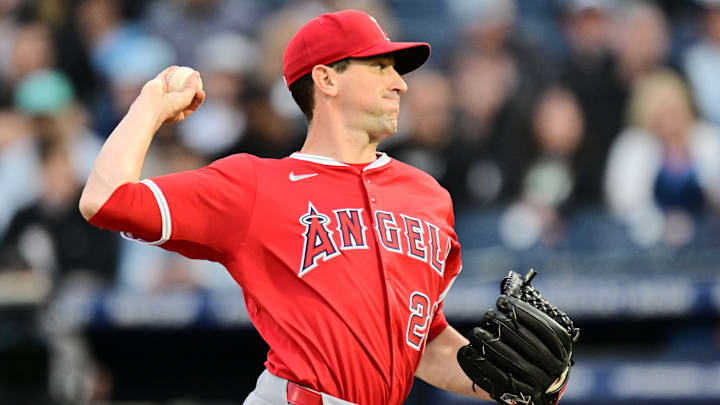The Angels entered the offseason desperately needing to rebuild their starting rotation. After several disappointing years, fixtures like Griffin Canning and Patrick Sandoval were jettisoned as the club looked to improve upon a group that finished 2024 ranked 28th in ERA with a 4.97 mark.
Starting pitching on the free agent market could be described as being divided into various tiers: clear aces, high-end no. 2's and 3's, back-of-the-rotation arms, upside plays, injury reclamations, and veteran mentors.
The Angels never toyed around in the ace stratosphere, instead choosing to dip into the next tier to sign Yusei Kikuchi to a three-year $63 million contract as one of the first major deals of the offseason. With Kikuchi in tow, the Halos were hoping that either he or one of the younger starters in the rotation would make the leap to claim the ace mantle.
The only other addition the Angels made was the signing of Kyle Hendricks, who at this point in his career clearly fell into the veteran mentor tier. Agreeing to a minimal salary of $2.5 million on a one-year deal, Hendricks was brought in more for his ability to serve as an extension of the coaching staff than for what he could provide from the mound in the twilight of his career.
Compared to other grizzled vets, Kyle Hendricks' performance has been a tremendous value for the Angels
Hendricks, 35, was forced to settle for such a pittance due to a poor 2024 campaign that saw him post a career-worst 5.92 ERA over 130.2 innings. A far cry from his peak, which featured a 2.13 ERA in 2016, which led the National League and earned him a third-place Cy Young finish, Hendricks had been in decline for some time.
Two other notable free-agent starters, Max Scherzer and Justin Verlander, occupied the same free-agent tier as Hendricks, though the soft-tossing Hendricks' prime never reached the same heights as the former aces.
Both Scherzer and Verlander are on the wrong side of 40 and are running on fumes, making most of their value similar to that of Hendricks -- veteran mentors who might be able to contribute a quality start or two, but whose greatest asset at this point is their mental ability rather than their arm talent.
Verlander landed a one-year $15 million deal with the San Francisco Giants while Scherzer signed a bit later to a nearly identical one-year $15.5 million contract with the Toronto Blue Jays. Compared to Hendricks, the two former aces were much more highly valued despite all three being much closer to the end than the beginning of their careers.
However, it is Hendricks rather than Scherzer or Verlander, both of whom have three Cy Young trophies in their awards cases, who is still pitching like a quality arm. In the early going, Verlander has posted a 6.14 ERA over two starts totaling just 7.1 innings while Scherzer allowed two runs in three innings before going down with an injury.
Hendricks, on the other hand, has been dealing to start the season. Over two starts and 11 innings, the soft-tossing righty has posted a 1.64 ERA. While it's unreasonable to expect Hendricks to keep up this pace, perhaps the signs of his demise as a quality pitcher were greatly overstated.
Unlike Scherzer and Verlander, Hendricks has never relied on velocity like the other two. Not once has the wily vet ever posted an average fastball velocity of 90 miles per hour or greater, instead relying on movement, change of speeds, and superb location to set up pitches and keep hitters off balance.
That kind of skill set can age well, but even if his season craters and this early-season dominance is just a blip on the radar, at $2.5 million, he's still a great value, especially when you factor in that his most comparable peers are making about six times as much.
Hendricks has immense value as a veteran leader, and if he's a net-positive in the rotation as well, his signing will prove to be a steal for the Halos.
